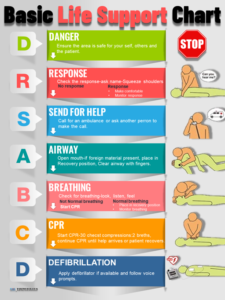Choosing a Low-Level Scissor Lift that Fits Your Project
4 min readLow-level scissor lifts are ideal for indoor projects, such as electrical installation or drywall hanging, because they are easy to maneuver, have intuitive controls and, most importantly, get you to the right working heights.
Low-level scissor lifts are great tools for indoor projects, such as electrical installation or drywall hanging. They are easy to maneuver, have intuitive controls and most importantly, get you to the right working heights without lugging tools and building materials up ladders and scaffolds.
There are hundreds of different lifts on the market and picking the right lift optimizes productivity and operator safety on the jobsite, and adds a low-maintenance machine to any tool fleet. There are four features that should be considered before making a purchase: working height, platform size, worksite impact and lifting capacity.
Heightened Awareness
Less is more when it comes to interior working heights. Contractors might think they need a lift with working heights taller than 25 feet, when actually they may be able to reach all projects with one that reaches a 20-foot working height. In fact, roughly 70 percent of lift operators say their jobs required working heights lower than 25 feet.
Low-level scissor lifts have step-in heights as low as 20 inches, making it easy for operators to load tools and materials onto the platform. Low step-in heights eliminate the fatigue caused by climbing multiple ladder rungs; reduce the chance of a serious fall; and minimize repetitive strains that can create workers’ compensation issues. Some manufacturers also incorporate a full swing gate, which makes platform loading easy and safe because the operator doesn’t have to duck under chains or railings.
Using an oversized scissor lift for interior work, such as electrical installation, can endanger the operator. Crush hazards are a constant presence when operators use an oversized lift indoors because the platform height exceeds the ceiling height. For instance, if an installer is using a 20-foot lift inside a 20-foot-tall room, he or she might get distracted while looking down over the railing as the platform is nearing the ceiling, creating a potential crush hazard.
A low-level lift, on the other hand, has roughly a 15-foot-tall platform height, which allows the installer to achieve a 20-foot reach with virtually no crushing hazard.
Stowed height also is important for operators to consider when selecting a low-level lift.
If a lift is less than 6 feet tall with the platform fully lowered, operators can easily push or drive the lift under overhead fixtures, such as support beams and doorframes.
A low-level lift should be less than 3 feet wide and 6 feet long so operators easily can transport it or maneuver it through narrow pathways. Some drive-around, low-level lifts are as narrow as 2 1/2 feet, which is wide enough for an operator and any tools he or she might need, yet still small enough to fit through doorways and take up minimal space in narrow hallways. And a lift that is less than 6 feet long easily can fit inside most elevators.
Some lifts have platform extensions that give operators extra working space for an additional person or building materials. The extension also allows operators to work over obstacles that might prevent the lift from moving forward. For example, an operator can slide out the extension to install a lighting fixture over a stairway railing.
Minimizing Damage
Low-level lifts should have minimal or no impact on the worksite. Features such as dual front wheels, counter-rotating wheels and self-contained hydraulic systems prevent a chance of hydraulic oil leaking and damaging floors.
Weight also can damage floors, and low-level scissor lifts have some of the best weight distribution in the industry. Their wheels spread the lift’s weight throughout the unit to reduce pressure on sensitive surfaces, including tile and stone floors. A 1,200-pound lift with dual front wheels might have wheel loads as low as 62.7 psi, which enables operators to maneuver the lift over floors with minimal risk of damage. The weight distribution also means operators can get onto poured concrete several days sooner than with heavier lifts.
Counter-rotating wheels also minimize the risk of damaging sensitive floors, allowing one side of the wheel to move forward, while the other moves back, which prevents bunching or twisting.




